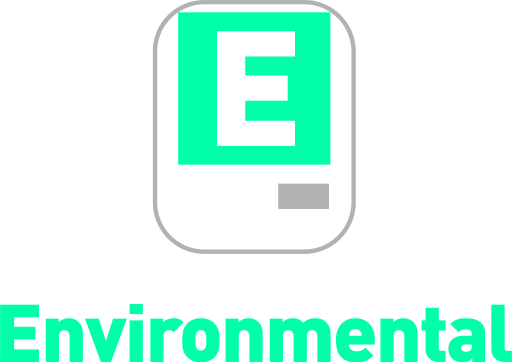IV. Corporate Responsibility and TESG
(GRI 3-1) (WEF 3)
Materialidad
Ecopetrol periodically conducts a materiality assessment to identify, analyze, and prioritize corporate responsibility and TESG concerns, including social, environmental, governance, and human rights issues, which may have an impact on the Company’s business performance and on its Stakeholder Groups. Positive and negative impacts on the economy, the people, and the environment have been identified to this end, considering factors associated with the relevance of each of the issues for all Stakeholder Groups, as well as the level of risk that inadequate or poor management represents for the Company. Below are some of the internal and external sources of information that provide inputs for the prioritization of said issues:
- The Ecopetrol Group’s corporate strategy and strategic risk map.
- Analysis of national and global corporate responsibility and TESG trends. This includes the social, economic, and political context in which the Ecopetrol Group operates.
- Stakeholder perceptions and expectations: the Company annually conducts the Stakeholder Perception and Expectation Survey, which shows the Stakeholders’ assessments and expectations regarding the Company’s management efforts. Based on the results of this survey, Ecopetrol is able to analyze the priorities of the groups that it interacts with and create engagement plans to inform and take action on the prioritized issues in the process.
- Corporate responsibility and TESG information requirements and requests pertaining to reporting instruments and disclosure of the contents in the Reporting Guide.
- Mechanisms for filing requests, complaints, and claims.
- Due diligence exercised on Human Rights.
Given that this exercise takes place every three (3) years, both the materiality of the Ecopetrol Group and that of its Stakeholder Groups is expected to be updated in 2023.
In 2020, the Ecopetrol Group updated its materiality, including inputs from all Stakeholder Groups, as well as the analysis of the risks, challenges, and goals associated with the corporate strategy and its long-term aspiration and vision. As a result of this exercise, potential positive and negative impacts were identified, which were integrated into 28 material elements classified into four (4) levels of prioritization.
Exceptional Elements are those in which Ecopetrol is or aspires to be a leader and contribute to the advancement thereof at a global level.
Notable Elements are those in which the Company must adopt best practices and incorporate the most recent trends in its management efforts.
Differentiated Elements are those matters that Ecopetrol manages in a differentiated way with respect to other state hydrocarbon companies.
Compliance Elements are the aspects that respond to regulatory and legal compliance.
The results of the materiality analysis were reviewed and approved by Ecopetrol’s Board of Directors, and constitute the foundation of the Generating Value with TESG pillar under the 2040 Strategy: Energy that Transforms.
Below is the prioritization of Ecopetrol’s material elements:
Exceptional Elements:
- Climate change
- Integrated water management
- Local development
Notable Elements:
- Biodiversity and ecosystem services
- Circular economy
- Use of alternative energy and sources
- Fuel quality
- Talent attraction, development, and retention
- Air quality
- Occupational health and industrial safety
- Process safety
Differentiated Elements:
- Corporate governance
- Diversity and inclusion
- Business ethics and risk culture
- Operational continuity system
Compliance Elements:
- Transparency and prevention of compliance risks
- Disclosure of information
- Disincorporation of wells and facilities
- Supply chain management
- Cultural heritage (ethnic and archaeological)
- Labor standards
- Management of real estate rights
- Land uses
- Conservation and environmental protection areas
- Public policy
- Comprehensive management system
- Access to information and citizen participation
- Prevention and management of incidents caused by third parties
Stakeholder Groups
Ecopetrol has identified seven (7) Stakeholder Groups, as listed below:
Stakeholder Groups’ perception and expectations survey: in 2022, the Company conducted this survey with a total of 91,534 people and organizations according to the databases and the information provided by the vice-presidencies that lead engagement processes. The survey determined the perception of the seven (7) Stakeholder Groups regarding the fulfillment of Ecopetrol’s value pledge to each of them, as well as the prioritization assigned by each of them to the material issues under the Generating Value with TESG pillar of the 2040 Strategy. Click here to access the 2022 survey results.
The Citizen Participation Office (OPC, as per its Spanish acronym) creates and facilitates spaces for interaction between the Stakeholder Groups and Ecopetrol and receives and manages petitions, complaints, claims, and requests (PQRS), as well as the commitments deriving from them.
The Commercial and Marketing Vice Presidency measures the service experience to customers every year.
In 2022, 92% of the customers surveyed rated their level of satisfaction between 7 and 10 compared with the general quality of their experience with Ecopetrol (according to the Top Four Boxes methodology), showing results equal to the minimum level of excellence established for this type of study (89%). For its part, the Vice Presidency of Low Emission Solutions also conducts an annual assessment of its natural gas, LPG, and energy customers. In 2022, 91% of the customers surveyed rated their level of satisfaction between 7 and 10 compared with the general quality of their experience with Ecopetrol (using the same Top Four Boxes methodology).
The Corporate Vice Presidency of Finance conducts shareholder and investor satisfaction surveys through the call center and via the chat service. In 2022, 13,137 shareholders and investors took the survey, with an average satisfaction result of 90%.
The Ecopetrol Group’s Human Talent Vice Presidency measures the degree of adoption of the Declaration of Culture by applying the “Mirada al Espejo” (Looking into the Mirror) survey, which is conducted every two (2) years and validates the level at which the work team has internalized the Cultural Principles. In between the measurements, a continuous listening strategy has been designed to validate the progress in adoption, using Cultural Pulses to measure aspects such as leadership, work environment, employee experience, and commitment to consolidate the desired organizational culture.
The Vice Presidency of Supply conducts biannual surveys through the Americas contact center to understand the suppliers’ perceptions on the engagement channels made available by the Company. Surveys are also conducted at the end of interactions with suppliers to find out their perceptions.
In fulfilling its commitment to respect Human Rights, Ecopetrol has participated in conversations with social and environmental leaders, and has also established protocols in the case of threats made against them by outsiders, and that are directly or indirectly related to the Company.
Stakeholder Groups’ 2022
Perception and Expectations Survey
Ecopetrol conducts this survey annually for al Stakeholder Groups to evaluate the Company as a corporate citizen, as well as to find out their assessments and expectations regarding the Company’s management efforts towards the Generating Value with TESG pillar under its 2040 Strategy, represented by the material elements and other corporate responsibility matters. The results of the survey are presented to the Board of Directors’ Corporate Governance and Sustainability Committee, and they also serve as an important input for the annual construction of engagement plans for each Group, as well as to conduct the materiality analysis that defines the structure and content of this report. In relation to the material issues, the Company’s seven (7) Stakeholder Groups reached the following prioritization:

- Climate change (reduction of methane and greenhouse gas emissions).
- Promotion and implementation of circular economy initiatives (where waste from one production chain is reused in the same chain or in the production of other products).
- Divestment and return of assets that are not aligned with the organization’s long-term strategy.

- Contribution to local development (social investment, employment generation, procurement of goods and services).
- Quality of the supply of communication, information, and participation channels.
- Promotion and support of public policies aimed at ensuring the competitiveness and sustainability of the sector.

- Contribution to local development (social investment, employment generation, procurement of goods and services).
- Quality of the supply of communication, information, and participation channels.
- Promotion and support of public policies aimed at ensuring the competitiveness and sustainability of the sector.

- Contribution to local development (social investment, employment generation, procurement of goods and services).
- Quality of the supply of communication, information, and participation channels.
- Promotion and support of public policies aimed at ensuring the competitiveness and sustainability of the sector.























